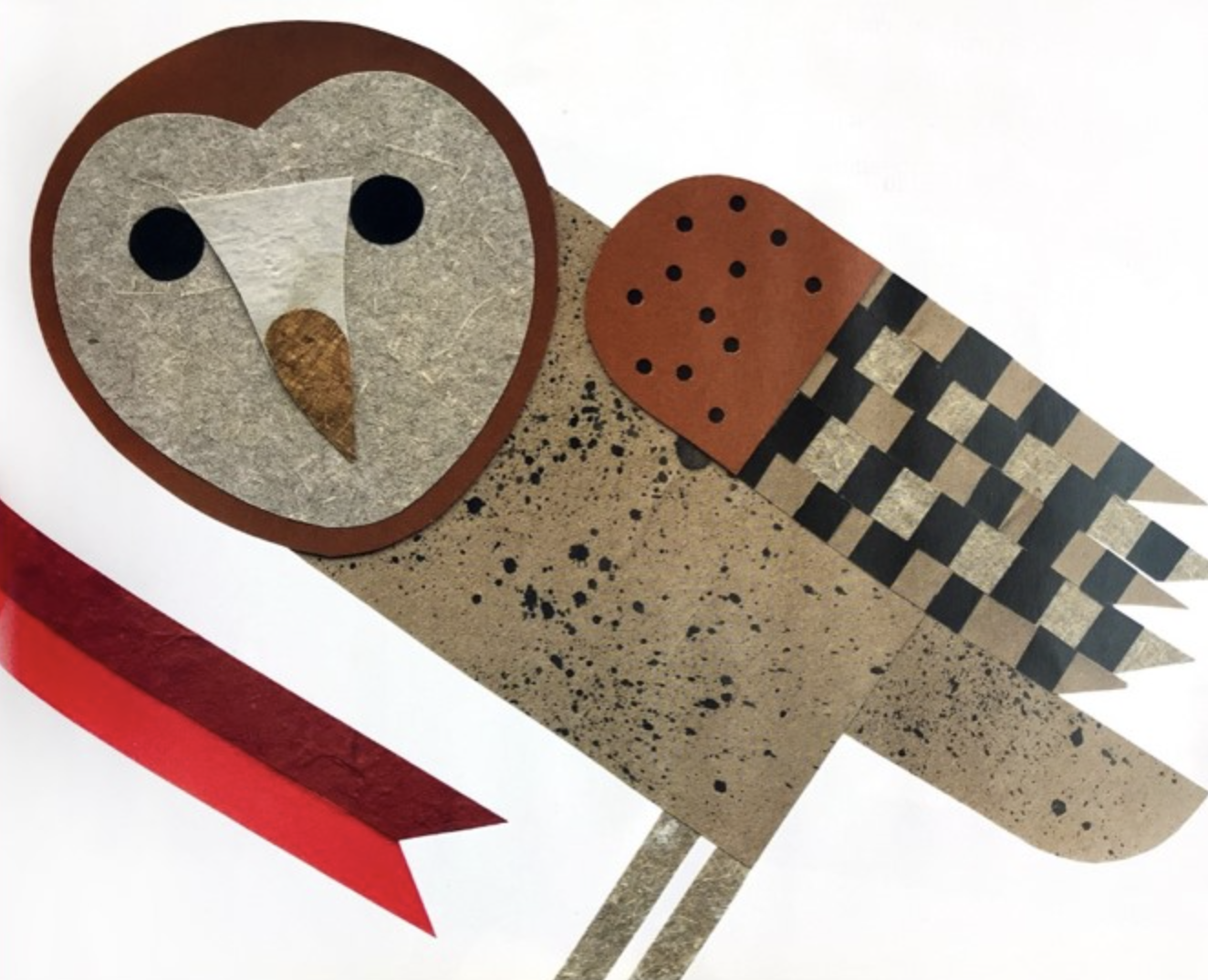Overview
Students will reflect on their art making using close-looking, speaking, writing, and/or sketchbook prompts.
Materials and Tools
- Pencil
- Sketchbook or one to two pieces of paper
- Collage from the previous lesson
Activities
Note: The following activities are written with sample language you may use with your students. Following the art-making lesson, you may choose as many reflection activities as desired for students to work on in class or independently.
Step 1: Writing Activity (10 minutes)
Hello, artists! Today we are going to look closely at our animal collages and start by writing about our artwork.
Based on your students’ writing skills, choose from the options below:
Option 1: Write two sentences about your animal to answer these questions:
- What kind of animal did you make?
- Write about two things you notice about your animal collage.
Option 2: Use the sentence frames below to write a sentence about your artwork.
I made a ____________.
I notice _______________ and ________________.
Step 2: Sketchbook Activity (10-15 minutes)
Now that you have looked closely at your animal collage, we’re going to think about a setting for our animal. A setting is a place, so a setting for our animal is a place where they might live.
Draw your animal in your sketchbook.
Think about where your animal lives or likes to play.
- What kind of a place is it?
- What do you see there?
- What details are in this place?
Draw your setting around your animal.
After students finish their drawings, ask:
- What kind of setting did you make for your animal?
Step 3: Close Looking: Lois Ehlert (10-15 minutes)
Note to Teachers: Before teaching with a work of art, spend some time looking closely at it on your own. Familiarizing yourself with the artwork will prepare you to guide the close looking activity.
If your students are new to looking at art together, you can introduce the activity to students in the following way:
Today we are going to spend some time looking at and discussing a work of art together. When we look at art, there are no right or wrong answers. I’m going to ask you to look closely, share your ideas about what you see, and listen respectfully to each other’s ideas. Everyone’s ideas are important. We all see things differently, and when we look at art, we can learn to see through each other’s eyes.

